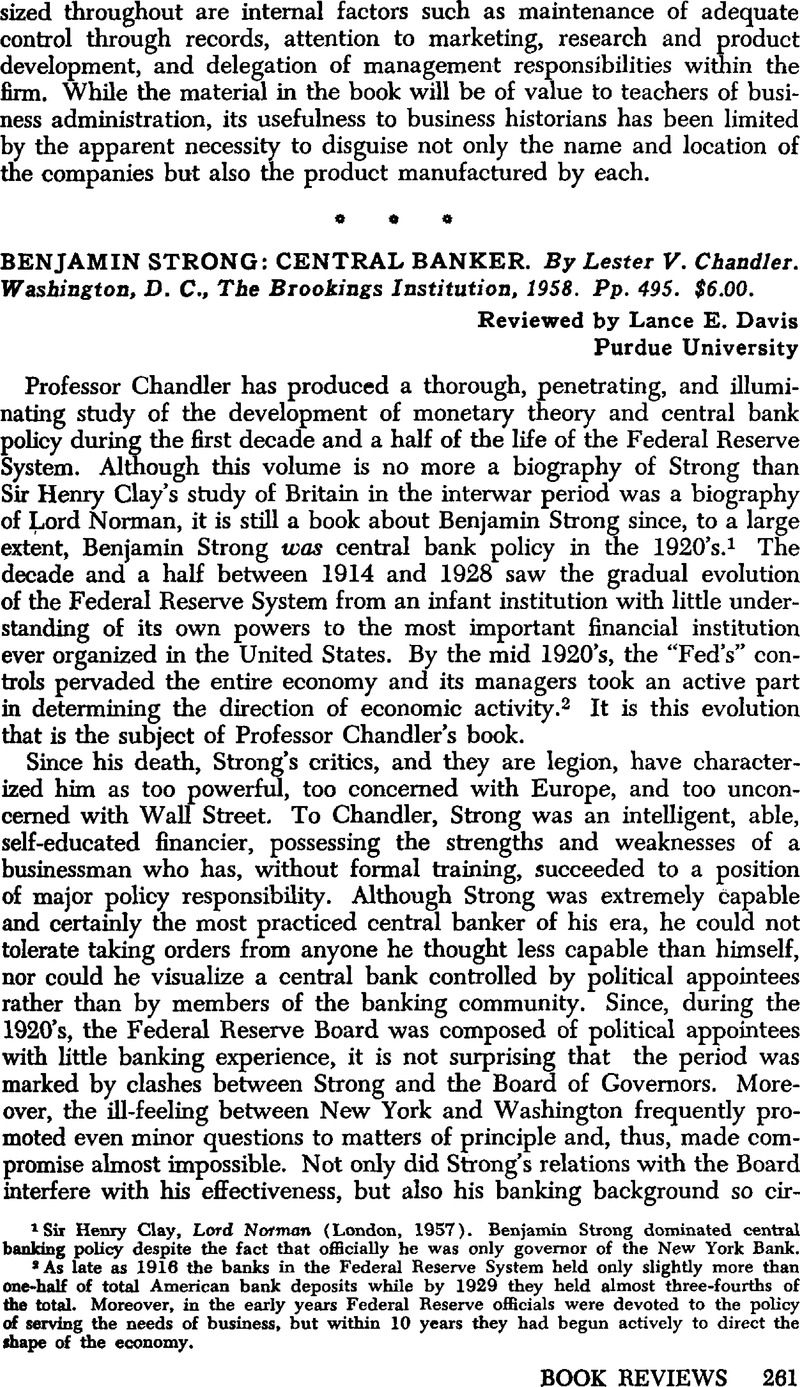No CrossRef data available.
Published online by Cambridge University Press: 24 July 2012

1 Sir Clay, Henry, Lord Norman (London, 1957).Google Scholar Benjamin Strong dominated central banking policy despite the fact that officially he was only governor of the New York Bank.
2 As late as 1916 the banks in the Federal Reserve System held only slightly more than one-half of total American bank deposits while by 1929 they held almost three-fourths of the total. Moreover, in the early years Federal Reserve officials were devoted to the policy of serving the needs of business, but within 10 years they had begun actively to direct the shape of the economy.
3 The question of Strong's views on price stability runs through many texts on money and banking. See, for example, Whittlesey, Charles R., Principles and Practices of Money and Banking (New York, 1948), pp. 372–374.Google Scholar As recently as 1957 Schlesinger argues that Strong's reduction of the discount rate in 1927 touched off the speculative boom. Schlesinger, Arthur, Jr., The Crisis of the Old Order (Boston, 1957), pp. 68–70.Google Scholar Finally, many standard economic history texts still blame Strong for his domination of Federal Reserve policy. See, for example, Robertson, Ross, History of the American Economy (New York, 1955), pp. 441–442.Google Scholar
4 This is also the view recently expressed by Professor J. K. Galbraith. At the time of Strong's action, a mild recession was developing. Galbraith, John Kenneth, The Great Crash (Boston, 1957) pp. 33–34.Google Scholar
5 At this time the Secretary of the Treasury and the Comptroller of the Currency were ex officio members of the Board.
6 Strong himself hoped that general controls could curb speculation without putting undue pressure on other parts of the market.
7 For a complete discussion of the Board's position, see Reed, Harold C., Federal Reserve Policy 1921–1930 (New York, 1930), pp. 136–138.Google Scholar
8 Margin requirements are, of course, one method of making speculative loans prohibitive.
9 One of the original purposes of the Federal Reserve Act had been to reduce the monetary power of Wall Street by distributing responsibility among the 12 Reserve Banks. Strong's actions proved conclusively that New York leadership could only be usurped by a powerful central body. Goldenweiser, E. A., American Monetary Policy (New York, 1951), p. 274.Google Scholar